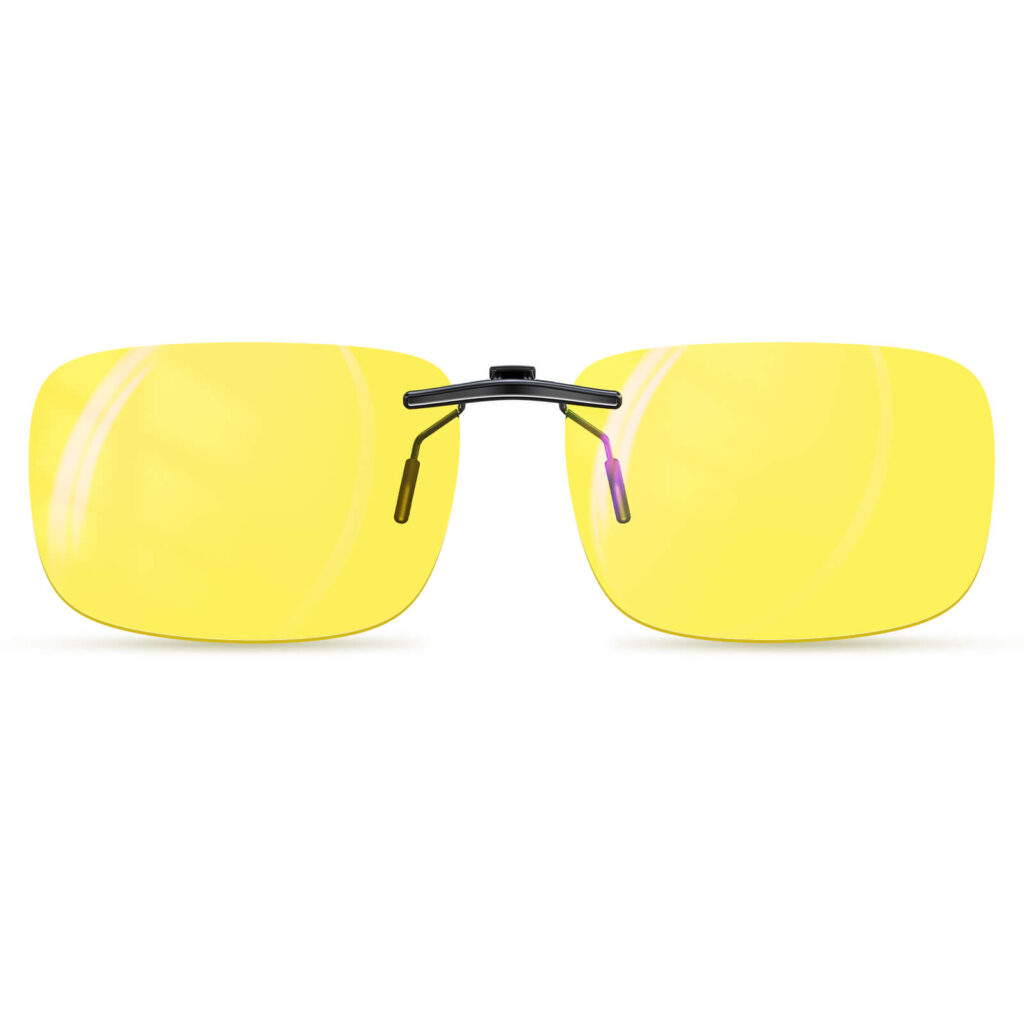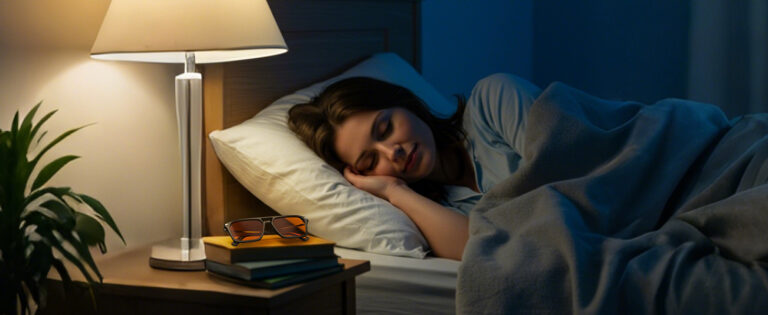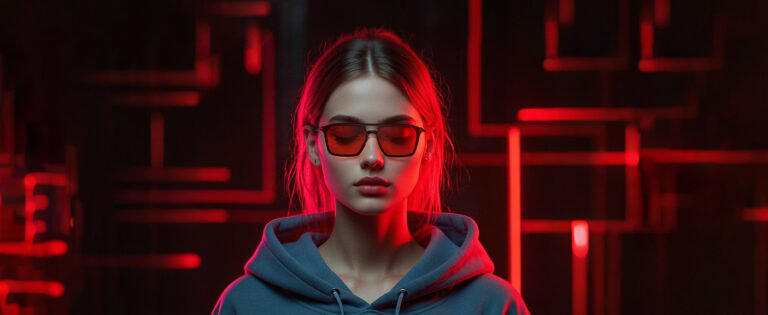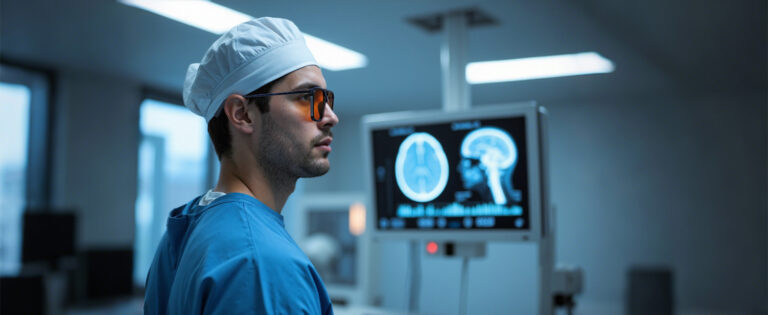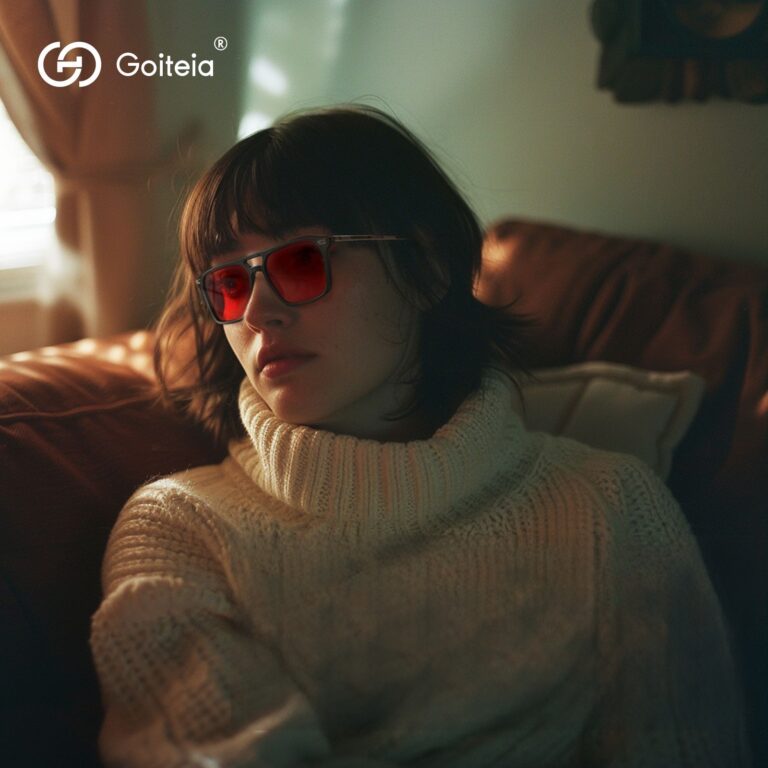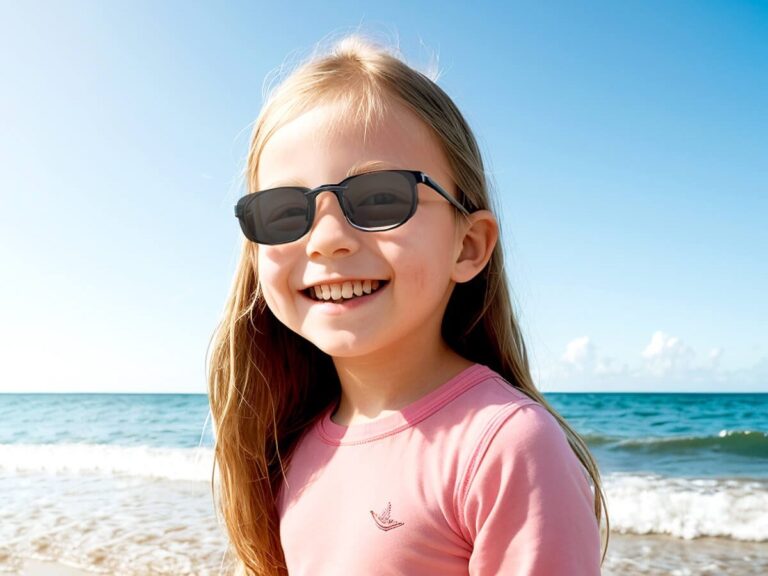Free UK/DE/FR/IT/ES/US Shipping SHOP NOW
From the screens we use for work and leisure to the artificial lighting in our homes, blue light is everywhere. While it plays a role in regulating our circadian rhythms and keeping us alert, excessive exposure can lead to discomfort and potential health issues. Blue light blocking glasses have emerged as a popular solution to manage these effects. This guide will provide detailed insights into blue light, how these glasses work, and best practices for their effective use.
Effects of Blue Light on Vision and Health
Short-Term Effects
Blue light exposure can cause immediate discomfort, especially for those who spend extended periods in front of screens. This type of light, characterized by its short wavelengths and high energy, can lead to symptoms such as digital eye strain, which includes dry eyes, blurred vision, and headaches.
Research indicates that staring at screens for long durations can strain the eye muscles, leading to increased visual discomfort. For example, office workers or students who spend 8-10 hours daily on a computer may experience frequent eye fatigue and headaches, often attributed to the intense blue light emitted by these screens.
Long-Term Effects
Prolonged blue light exposure can have more serious implications beyond immediate discomfort. One significant concern is its potential impact on sleep quality. Blue light interferes with the production of melatonin, the hormone responsible for regulating sleep-wake cycles.
Studies suggest that excessive blue light exposure, particularly in the evening, can disrupt these cycles, leading to difficulties in falling asleep and poorer sleep quality overall. Over time, chronic sleep disturbances can contribute to more severe health issues, such as increased stress levels, reduced cognitive function, and a weakened immune system.
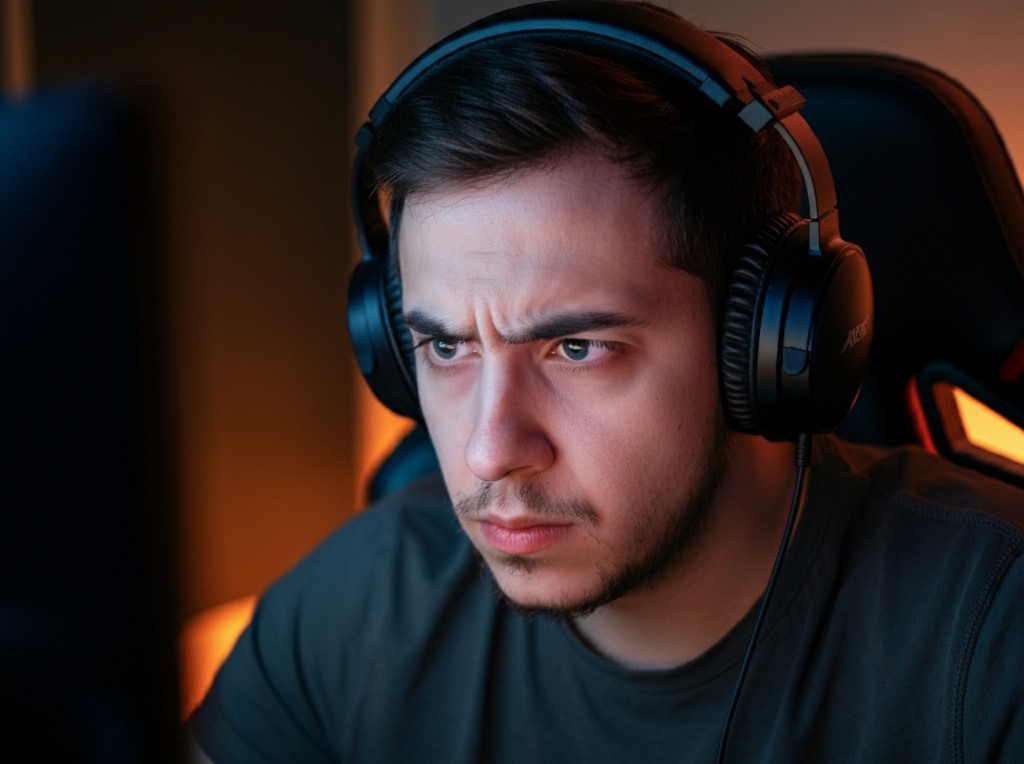
Special Types of Blue Light Blocking Glasses
Understanding the technology behind blue light blocking glasses can help you make an informed decision about which type is right for you.
Clip-On Blue Light Blocking Glasses
Clip-on blue light blocking lenses are designed to attach to your existing prescription glasses, providing a convenient and cost-effective solution for blue light protection. These clips generally feature a specialized coating that absorbs or reflects blue light, reducing glare and eye strain. The main advantage of clip-ons is their affordability and ease of use; they can be easily attached or removed as needed.
Advantages of Clip-On Glasses
Cost-Effective: Clip-on blue light blocking lenses are a wallet-friendly choice. Instead of buying a whole new pair of blue light glasses, you can simply add clip-ons to your existing prescription glasses. This saves you money while still giving you the blue light protection you need.
Convenient: These lenses are super easy to use. They clip right onto your current prescription glasses. This means you don’t have to juggle multiple pairs of glasses or carry extras. Just attach the clip-ons when you need them and go about your day.
Flexible: Clip-on lenses are designed to fit any type of prescription glasses. Whether you have metal frames, plastic ones, or a unique shape, these clip-ons will work. This flexibility means you can protect your eyes from blue light without changing your style or comfort. Plus, if you have different glasses for various uses, you can easily switch the clip-ons between them.
Choosing Between Clip-On and Standard Glasses
When deciding between clip-on lenses and standard blue light blocking glasses, consider factors such as comfort, style, and cost. If you prefer a more integrated and permanent solution, standard glasses may be the better choice. They typically offer a more streamlined design and can be customized to fit your needs better. On the other hand, if you’re looking for a budget-friendly option and already have prescription glasses, clip-ons can provide adequate protection without the need for a separate pair.
Best Practices for Maximum Benefits
Integrating with Other Eye Care Strategies
To maximize the benefits of blue light blocking glasses, it’s important to integrate them with other eye care strategies. This includes following the 20-20-20 rule, which suggests taking a 20-second break every 20 minutes to look at something 20 feet away. This practice helps relax your eye muscles and reduce the risk of digital eye strain. Additionally, maintaining a healthy diet rich in antioxidants, omega-3 fatty acids, and vitamins A and C can support overall eye health and mitigate the impact of blue light exposure.
Combining with Device Settings Adjustments
Adjusting your device settings can further enhance the effectiveness of blue light blocking glasses. Many modern devices have built-in features like blue light filters or night mode, which reduce the amount of blue light emitted from the screen. Using these settings in conjunction with your blue light blocking lenses can provide comprehensive protection and improve your overall comfort. For example, enabling night mode on your smartphone or computer in the evening can complement the protective effects of your glasses and help maintain your circadian rhythm.
Monitoring and Adjusting Usage Based on Results
Regularly monitor how your blue light blocking lenses are impacting your eye comfort and overall well-being. If you find that you’re still experiencing symptoms of eye strain or discomfort, it might be necessary to adjust your usage habits or seek professional advice. Consider keeping a journal to track your symptoms and any changes in your routine. If issues persist, consult with an eye care professional to ensure that your glasses are suitable for your specific needs and to explore other potential solutions.
Who Can Benefit from Blue Light Blocking Glasses?
General Users
Blue light blocking glasses are beneficial for anyone who spends considerable time in front of screens. This includes students, professionals, and casual users who may experience eye strain or discomfort due to prolonged digital device use. By incorporating these glasses into your daily routine, you can reduce symptoms of digital eye strain and enhance your overall visual comfort.
Office Workers
Office workers often face extended periods of screen use, making them prime candidates for blue light blocking glasses. These glasses can help alleviate common issues associated with prolonged computer use, such as eye strain, headaches, and dry eyes. For those working in environments with bright, artificial lighting, blue light blocking glasses can also help manage glare and improve visual comfort throughout the workday.
Gamers and Content Creators
Gamers and content creators typically engage in long sessions of screen time, which can increase the risk of digital eye strain. Blue light blocking eyewear can help mitigate the effects of prolonged exposure to high-energy light, allowing for more comfortable and extended gaming or content creation sessions. By reducing eye strain and glare, these glasses can enhance performance and overall enjoyment.
Children and Adolescents
With the rise of digital learning and recreational screen use among children and adolescents, blue light blocking glasses can play a crucial role in protecting their developing eyes. As young people spend more time on screens for both educational and entertainment purposes, these glasses can help manage eye strain and support healthier visual habits from an early age.
When to Use Blue Light Blocking Glasses
During Screen Time
Incorporate blue light blocking eyewear into your routine whenever you use digital devices. Whether you’re working on a computer, scrolling through your smartphone, or watching TV, wearing these glasses can help reduce eye strain and make screen time more comfortable. For optimal results, put them on at the start of your screen time and keep them on throughout.
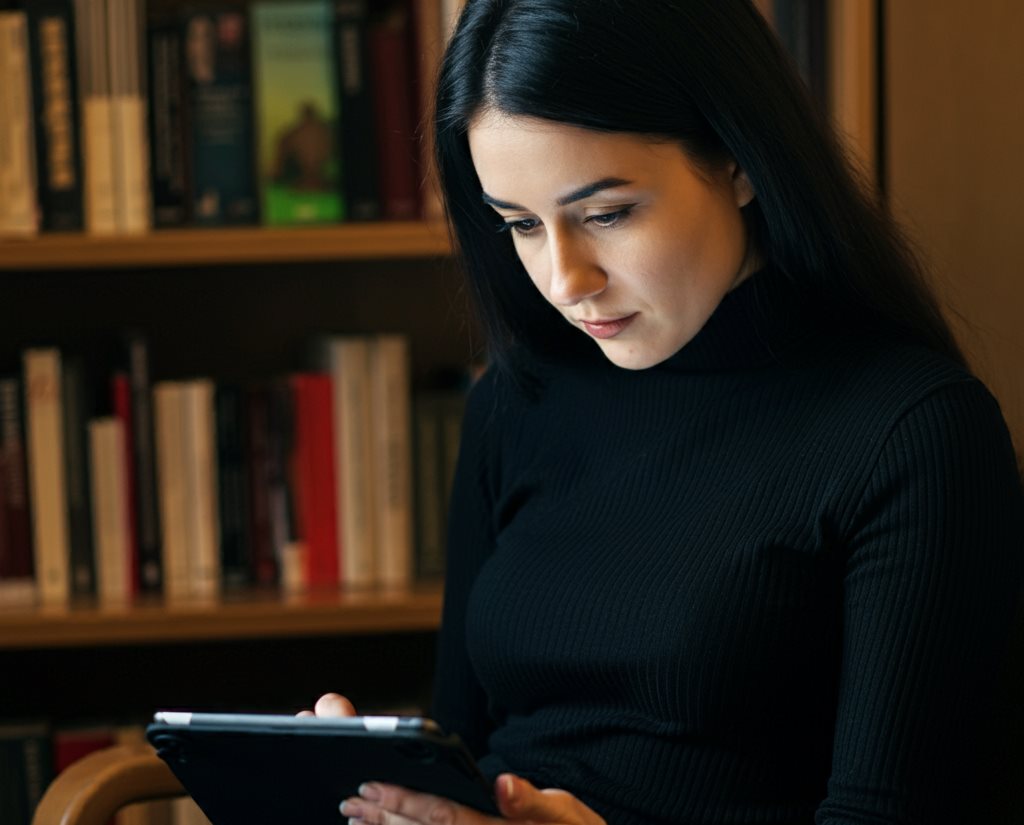
Before Bedtime
Integrate blue light blocking glasses into your evening routine, especially if you use screens before bed. Wearing them while watching TV, reading on an e-reader, or using other electronic devices can help reduce blue light exposure and support a healthier sleep pattern. Aim to start using your glasses at least an hour before bedtime to allow your body to wind down and prepare for restful sleep.
In Different Lighting Conditions
Blue light blocking glasses can also be beneficial in various lighting environments. Use them in settings with artificial lighting, such as LEDs or fluorescent lights, to manage glare and reduce eye strain. Additionally, they can help when transitioning from natural daylight to indoor lighting, ensuring consistent eye comfort throughout the day.
Common Misuses of Blue Light Blocking Glasses
Wearing Them Only Occasionally
For blue light blocking glasses to be effective, they need to be used consistently. Wearing them only occasionally or sporadically may not provide the continuous protection needed to alleviate eye strain and support overall eye health. Make it a habit to wear your glasses whenever you’re engaging in activities that involve significant screen time or artificial lighting.
Using Them with Dirty Lenses
Dirty lenses can impair the effectiveness of blue light blocking lenses. To maintain clear vision and optimal performance, clean your glasses regularly using a microfiber cloth and lens cleaner. Avoid using abrasive materials or harsh chemicals, as these can damage the lens coating and reduce their effectiveness.
Why These Methods May Not Work
If you’re not seeing the expected benefits from your blue light blocking glasses, it could be due to improper use or other factors. Ensure you’re wearing the glasses consistently and following best practices for eye care. If issues persist, consider consulting with an eye care professional to address any underlying problems and explore additional solutions.
Conclusion
Blue light blocking glasses provide an effective way to reduce digital eye strain and improve your overall eye comfort. Whether you’re working, gaming, or simply spending time on screens, these glasses can help protect your eyes from the harmful effects of blue light. For best results, wear them consistently, keep the lenses clean, and combine them with other eye care practices.
FAQs
1. What is blue light, and why should I be concerned about it?
Blue light is a type of high-energy visible light emitted by screens and artificial lights. While it plays a role in regulating sleep and mood, excessive exposure can lead to eye strain, sleep disturbances, and long-term health issues. Blue light blocking eyewear help filter out this light, reducing potential negative effects.
2. How can I tell if my blue light blocking glasses are working?
You should notice a reduction in eye strain, headaches, and visual discomfort when using blue light blocking glasses. If you’re still experiencing issues, it may be helpful to review your usage habits or consult with an eye care professional to ensure the glasses are providing the protection you need.
3. Can blue light blocking glasses help with sleep issues?
Yes, blue light blocking eyewear can improve sleep quality by reducing blue light exposure, which interferes with melatonin production. Wearing these glasses before bedtime can help maintain a healthy sleep-wake cycle and promote better overall sleep.
4. Are clip-on blue light blocking glasses as effective as standard glasses?
Clip-on blue light blocking glasses can be effective but may offer varying levels of protection based on their quality and fit. Standard blue light blocking glasses generally provide a more integrated solution with better comfort and effectiveness.
5. How should I clean and maintain my blue light blocking glasses?
Clean your blue light blocking lenses regularly using a microfiber cloth and lens cleaner to remove smudges and maintain clarity. Avoid using abrasive materials or harsh chemicals, and check for any damage that might affect their performance. Regular maintenance ensures optimal functionality and longevity.


